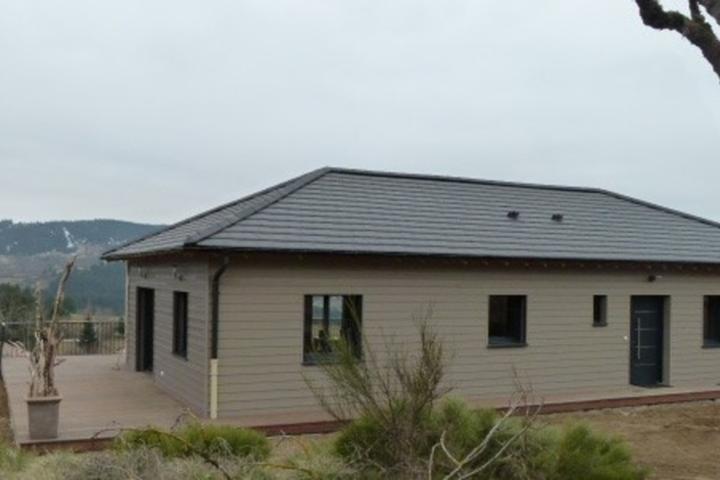Entraînement nage en eau libre
La nage en eau libre désigne toutes les activités de natation pratiquées en mer, en lac ou en rivière, généralement sur des grandes distances. La nage en eau libre désigne aussi les épreuves sportives de natation organisées en extérieur.
Période d'ouverture
Ganzjährig, täglich.activite_commerceEtServicePrestataire
Association Montpezat Source du Sport NaturedescriptionTarif_gratuit
NodescriptionTarif_complement
Adhésion 2022/2023 : 40€ avec licence FNSMR. 2 séances d'essai gratuitesnahe
J'y serai en tant qu'exposant pour le Trail de La Chaussée des Géants et j'aimerais me renseigner pour moi même
Source des données

Données mises à jour le 21/Mar/2024 00:30:41


















































Balanset-1A: The Ultimate Rotor Balancing Device
In the realm of industrial maintenance, ensuring the efficiency and longevity of machinery is paramount. One essential tool in this endeavor is the Balanset-1A rotor balancing device. Priced at €1751, this sophisticated device is designed to perform precise vibration analysis and corrective balancing of rotors, including fan blades. But how is the vibration analysis of a fan blade conducted? Let’s explore the comprehensive process involved in using the Balanset-1A.
Components of the Balanset-1A
The Balanset-1A kit includes:
2 Vibration Sensors
1 Phase Angle Sensor (Laser Tachometer)
1 Measuring Block (Balanset Device)
1 Magnetic Stand
1 Electronic Scale
1 Transportation Case
Software on USB Flash Drive
Preparation of Equipment
Before kicking off the balancing process, proper equipment setup is crucial. Start by installing the vibration sensors perpendicular to the rotor's axis of rotation. Secure the laser tachometer on the magnetic stand, aiming it at the reflective tape attached to the pulley. Connect the sensors to the Balanset device and link it to a laptop via USB. Launch the Balanset software and select the two-plane balancing mode.
Initial Vibration Measurement
Prior to balancing, weigh the test mass and note its weight and installation radius. Start the rotor and measure the initial vibration level to determine the amplitude and phase of the existing imbalance. This data is critical for the subsequent balancing steps.
Balancing in the First Plane
Install the test mass in the first balancing plane, corresponding to the position of the first sensor. Restart the rotor and measure the vibration level again. A change of at least 20% in amplitude or phase indicates that the imbalance has been partially corrected, providing valuable feedback for the next steps.
Balancing in the Second Plane
Next, transfer the test mass to the second balancing plane, where the second sensor is located. Once again, restart the rotor and take measurements. These results allow the Balanset software to calculate the precise location and weight of the corrective masses needed.
Correction of Imbalance
Based on the collected data, the Balanset program will suggest corrective weights and their installation angles for both planes. Remove the test mass and prepare the corrective weights as per the program's recommendations. Install them at the specified angle in the rotor's direction of rotation, away from the test mass's initial position.
Verification and Completion of Balancing
Finally, run the rotor for a concluding balance check. If the vibration level has decreased to an acceptable range, the process is complete. Should additional corrections be necessary, the program will guide you on where and how much more weight to add.
Key Considerations
It is essential to ensure that the mechanism is in good working order and firmly mounted before balancing. If necessary, any malfunctioning components should be repaired and the rotor cleaned of debris that may interfere with the balancing process.
Before conducting measurements, select installation locations and set up the vibration and phase sensors according to the recommendations provided. It is advisable to perform preliminary vibration measurements to ascertain the contribution of rotor imbalance to overall vibration levels.
In conclusion, the Balanset-1A rotor balancing device from Vibromera represents a significant advancement in vibration analysis technology, particularly for fan blades. By following the systematic approach outlined above, technicians can ensure optimal performance and prolong the operational lifespan of their machinery. With its comprehensive features and user-friendly software, Balanset-1A is an invaluable addition to any industrial maintenance toolkit.
Contact Information:
For more information about our Balanset balancing devices and other products, please visit our website: https://vibromera.eu.
Subscribe to our YouTube channel, where you will find instructional videos and examples of completed work: https://www.youtube.com/@vibromera.
Stay updated with our latest news and promotions on Instagram, where we also showcase examples of our work: https://www.instagram.com/vibromera_ou/.
Buy Balanset-1A on Machinio
Balanset-1A OEM on Etsy